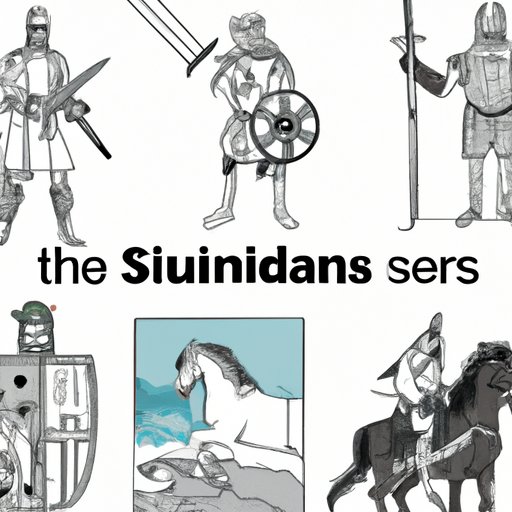Introduction
Medieval culture in Western Europe is defined as the culture that developed during the Middle Ages, which spanned from the 5th to the 15th centuries. This period was marked by the rise of Christianity and the decline of the Roman Empire. Throughout this time, three main pillars of influence helped shape the culture of Western Europe: Christianity, Ancient Rome, and Feudalism.

Exploring the Impact of Christianity on Medieval Culture in Western Europe
Christianity had a major impact on the development of medieval culture in Western Europe. The Church was an important institution in medieval society, as it provided spiritual guidance, education, and social welfare. Monasticism was also an important part of the Church, as it provided an outlet for religious devotion and social service. Ecclesiastical law was another important aspect of the Church, as it regulated marriage, inheritance, and other aspects of life.

Examining the Cultural Influences from Ancient Rome on Medieval Europe
Ancient Rome was another major influence on medieval culture in Western Europe. Latin language and literature were preserved, providing continuity between the Roman and medieval periods. Additionally, the Roman legal system and political institutions were adopted and adapted by medieval societies. Finally, Roman art and architecture had a lasting impact on the development of medieval culture.

Investigating the Role of Feudalism in Shaping Medieval European Culture
Feudalism was also an important factor in shaping medieval culture in Western Europe. Manorialism, or the system of land ownership by nobles and peasants, was established. This created a hierarchical social structure with the nobility at the top and the peasants at the bottom. Feudal relationships were also influential, as lords and vassals were bound together by a system of mutual obligations.
Analyzing the Contributions of the Church to Medieval European Culture
The Church was instrumental in the development of medieval European culture. Religious centers of learning, such as monasteries and universities, were established. Clergy and nobility were educated in theology, philosophy, and other subjects. The Church also had a strong influence on politics, as the power of the Papacy grew throughout the Middle Ages.
Understanding the Role of Chivalry in the Development of Medieval Culture in Western Europe
Chivalry was another important element of medieval culture in Western Europe. The Code of Chivalry, a set of principles for knights, was established. These included loyalty, courage, and honor. These ideals were promoted through literature, art, and music, and had a significant impact on medieval society.
Conclusion
In conclusion, the three main pillars of medieval culture in Western Europe were Christianity, Ancient Rome, and Feudalism. Each of these influences had a profound impact on the development of medieval society and culture. Christianity provided spiritual guidance, while Ancient Rome contributed its legal system, political institutions, and artistic traditions. Feudalism established a hierarchical social structure and created a system of mutual obligations between lords and vassals. Finally, the Code of Chivalry promoted knightly virtues and had a lasting impact on medieval society.
(Note: Is this article not meeting your expectations? Do you have knowledge or insights to share? Unlock new opportunities and expand your reach by joining our authors team. Click Registration to join us and share your expertise with our readers.)
